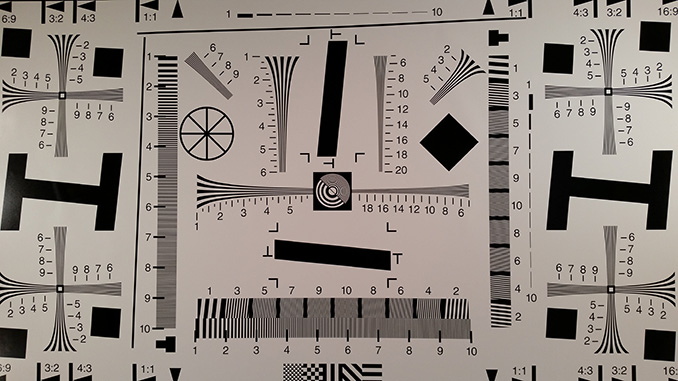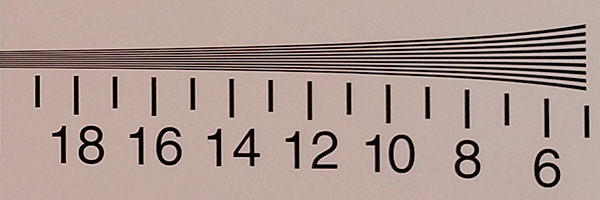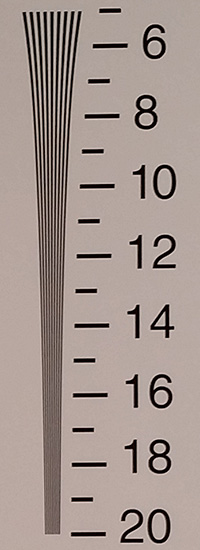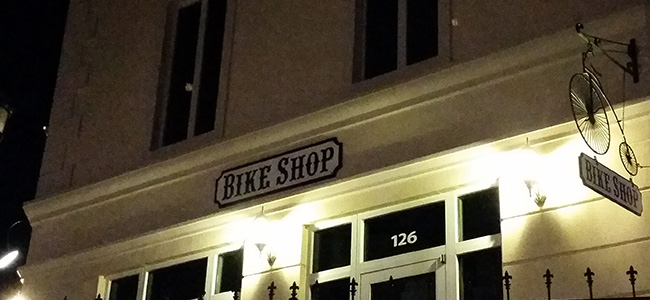Samsung Galaxy S 5 Review
by Anand Lal Shimpi & Joshua Ho on April 8, 2014 12:00 AM EST- Posted in
- Smartphones
- Samsung
- Mobile
- Galaxy S 5
Camera Architecture & Still Image Analysis
Samsung's real potential has yet to be realized as a highly vertically integrated silicon and device house. The Galaxy S 4 for example still relied on a Qualcomm SoC with a Sony sensor for the rear facing camera. While the GS5 continues to leverage Qualcomm's silicon, Samsung did transition to its own sensor for the rear camera module as well as the front facing camera.
The front facing camera remains 1080p, despite competitors like HTC moving to 5MP. The front camera uses a 16:9 sensor with 1.12µm pixels shooting at 1080p.
| Samsung Galaxy S 5 Camera | ||||
| GS5 | ||||
| Front Camera | 2MP | |||
| Front Camera - Sensor |
S5K8B1YX (1.12µm, 1/7.3") |
|||
| Front Camera - Capture Resolution | 1920 x 1080 | |||
| Front Camera - Aspect Ratio | 16:9 | |||
| Front Camera - Focal Length | 1.2mm | |||
| Front Camera - Max Aperture | f/2.4 | |||
| Rear Camera | 16MP | |||
| Rear Camera - Sensor |
S5K2P2XX (1.12µm, 1/2.6") |
|||
| Rear Camera - Capture Resolution | 5312 x 2988 | |||
| Rear Camera - Aspect Ratio | 16:9 | |||
| Rear Camera - Focal Length | 4.8mm | |||
| Rear Camera - Max Aperture | f/2.2 | |||
The rear camera is the interesting one as it uses Samsung's own 16MP 16:9 sensor. This makes the GS5 and M7/M8 the only two modern shooters we have with 16:9 rear facing sensors. The GS5 unfortunately doesn't move to larger pixels, remaining at 1.12µm. To somewhat improve low light performance, Samsung is using its own ISOCELL technology to reduce crosstalk between pixels by introducing additional barriers between individual pixels. The video below does a decent job at summarizing what we know about ISOCELL:
Unlike Apple and HTC, there's no dual-color flash on the GS5 - just a single LED unit.
As always we turn to a collection of controlled test shots and live scenes to evaluate the GS5's camera quality.
Spatial Resolution
We'll start by measuring the rear facing camera's ability to resolve fine details by shooting at an ISO12233 test target. For now we'll be looking at horizontal and vertical resolution using the sagittal and tangential lines in the upper right of the center of the test chart:

ISO12233 captured by Galaxy S 5
The gallery below has links to the original chart captures for all of the phones compared in this review:

The GS4 already did well in this test, easily resolving the entire length of sagittal lines. The GS5 maintains slightly more detail past the 18 mark (units of line pairs per image height). The iPhone 5c and 5s do reasonably well here but can't resolve detail as well at the very left edge of the crop. Google's Nexus 5 has similar struggles, although nothing is anywhere near as bad as HTC's M8. Here we see the real limits of HTC's 4MP UltraPixel sensor as there's serious aliasing around the 12 mark. Sony's Xperia Z1s running in its native 20MP mode on the other hand is the clear winner here.
You can see full 1:1 resolution crops in the gallery below:

The story is unchanged if we look at the tangential crops as well. The GS4 and GS5 remain among the upper contenders in this space, losing out only to Sony's Z1s. Interestingly enough the GS5's image appears to be softer than what the GS4 produced. We'll have to spend some more time with Samsung's ISOCELL sensor to really get a feel for the images it produces.
Outdoor Scenes (Day & Night)
We grabbed test shots from four different locations using the GS5 and its immediate competitors. I've included all of the originals in the galleries below, but let's take a look at crops from a couple of them first.
I'll start with a low light test shot as that's one of the more challenging environments for such a sensor with such tiny pixels. Here we'll be able to see just how much ISOCELL buys us:

The GS5 shot this scene at 1/15s, ISO 2000. The GS4, by comparison, kept the shutter speed the same but ran at ISO 1000. The GS5 is naturally brighter as a result, but without substantially more noise. The image is relatively usable. Toggling picture stabilization (the new word for night mode on the GS5) trades off noise for exposure length, although Samsung obscures the latter in its exif data. When shooting without a tripod, longer exposure times aren't desirable (particularly without OIS).
The GS5's low light performance obviously pales in comparison to devices with larger pixels like the M8 and especially the iPhone 5s. There's an obvious tradeoff here. Samsung delivers clearly better spatial resolution (as seen from our ISO12233 test shots), while HTC on the other hand offers better low light performance. Apple finds itself in the middle of the two with the iPhone 5s. The Xperia Z1s does give us a good example of what you can get from oversampling as we're shooting in the 8MP superior auto mode here.

Moving to the opposite end of the spectrum, this daylight shot gives us an example of where the M8 clearly loses out to the GS5. You lose all details in the tree, and there's quite a bit of noise in the sky on the M8. The GS5 however delivers a substantially better shot.
Lab Scene
The next set of shots use a light controlled lab setup. Here we are immune to natural variances of sunlight and can do some true apples to apples comparisons.

The GS4 and GS5 are pretty close to one another in our scaled/cropped shot. There are some differences in color handling and dynamic range between the two devices. I actually find that there's some loss in detail in the paintbrush on the GS5 compared to the GS4. I've seen a number of situations where aggressive noise reduction on the GS5 seems to mangle detail and deliver a very oil painting like effect, although that's an extreme that we're not seeing here.

The GS5 once again defaults to 1/15s at ISO 2000, compared to the same exposure time but ISO 1000 on the GS4. Here we really see what Samsung's sensor can do as the resulting image goes from unusable on the GS4 to passable on the GS5. The final image isn't particularly great by any means but it's at least usable. If you're looking for ultimate low light winners here there really are only two: the 5s and the M8.
HDR
The GS5 has a very fast and usable HDR mode. You can toggle the mode on directly from the default camera UI (tap the icon on the left side of the display) and you get effectively instant HDR captures:

The GS5's HDR captures do a good job of retaining detail in the shadows while bringing in detail in the highlights.


























































296 Comments
View All Comments
Blairh - Wednesday, April 9, 2014 - link
* 30 grams less than the M8. Substantially shorter too.az06093 - Wednesday, April 9, 2014 - link
Where's the video analysis?xmen77 - Wednesday, April 9, 2014 - link
S5 bestDisplay
S5 improved super amoled
z2 ips on the color RGB lighting with the addition of red and green phosphorus in diodes
All new one ips on the white backlight
M8 have the same quality as in the display М7
Cool backlight Z2, expanding the color gamut and "improves the shades",
actually distorts the color because all the images are designed for
standard sRGB and an extension will only be in the negative. Although
the display is still better than the HTC M8.
Amoled gradually improved and now he has lost almost all the shortcomings, there was only slight, noticeable only during the rapid motion of the screen (in front of screen) "modulation" at low brightness at maximum (it is comfortable in all conditions) this "modulation" No, I do not know why samsung does so in LG G Flex is no such (there is also amoled)
In OLED (Amoled) white whiter IPS, faster response in comparison to LCD
(hundreds of times better than LCD), contrast and black level is perfect
(hundreds of times better than LCD), colors
do not mix with each other,, ideal viewing angles.
Oversaturated color removed using a cinema mode
blog.gsmarena.com/samsung-details-new-galaxy-s5-display-panel/
phonearena.com/news/Samsung-details-its-new-Galaxy-S5-display-the-brightest-most-efficient-OLED-screen-to-date-can-hit-698-nits_id54767
phonearena.com/news/Display-Mate-Samsung-Galaxy-S5-has-the-best-performing-smartphone-display-that-we-have-ever-tested_id54583
i-cdn.phonearena.com/images/articles/116013-image/Samsung-Galaxy-S5-HTC-One-M8-Sony-Xperia-Z2-LG-G-Pro-2-0122.jpg
i-cdn.phonearena.com/images/articles/116012-image/Samsung-Galaxy-S5-HTC-One-M8-Sony-Xperia-Z2-LG-G-Pro-2-012.jpg
i-cdn.phonearena.com/images/articles/116009-image/Samsung-Galaxy-S5-HTC-One-M8-Sony-Xperia-Z2-LG-G-Pro-2-009.jpg
ixbt.com/mobile/images/samsung-galaxy-s5/vs-pict-angle-l.jpg
ixbt.com/mobile/images/samsung-galaxy-s5/vs-white-angle-l.jpg
hi-tech.imgsmail.ru/hitech_img/source/cf/dc/746f7c86490ffdb8e93c035d5e62.jpg
Camera
S5 1/2.6 isocell phase autofocus 6 lenses
z2 1/2.3 bsi 5 lenses
one 1/3 bsi 4 lenses
At S5 even crude firmware (new sensor) better color, detail and less noise
The rest of at the final firmware is very bad, especially in HTC
eprice.com.tw/mobile/talk/124/4899661/1/rv/sony-xperia-z2-review/
eprice.com.tw/mobile/talk/124/4899662/1/rv/sony-xperia-z2-review/
4pda.ru/forum/index.php?showtopic=515584&view=findpost&p=30435226
Waterproof
S5 ip x6
Z2 ip x7
one ip x3
Bezels
S5 is more or less thin bezels
Z2 more or less thin bezels
one big bezels
Performance
S5 2048 MB RAM (Dual-channel) LPDDR3
Z2 3072 MB RAM (Dual-channel) LPDDR3
M8 2048 MB RAM DDR2
phonearena.com/news/HTC-admits-its-High-Performance-Mode-pumped-up-benchmark-scores-for-the-HTC-One-M8_id54509
Body
Metal is bad for the connection know about it all in the industry, aluminum is not a premium material, it is used for beer cans. At s5 soft touch texture like nexus7 instead of glossy plastic s4
doobydoo - Friday, April 11, 2014 - link
Troll post. You say plastic is used for beer cans - plastic is used for trash bags.Aluminium is preferred.
TheSailorMan - Sunday, April 13, 2014 - link
"Preferred" for what? For helmets?? For car bumpers??? .......Aluminum is is the WORST material for smartphones. In many ways.
And YES , same drink in plastic bottle cost more than , if it is in cans. Check it out.
Plastic is MORE expensive than ALUMINUM. Check out this , too
Streamlined - Thursday, April 17, 2014 - link
Samsung Fanboy alert. Metal is far superior to plastic for heat dissipation alone. Not to mention it's more durable. And on what world is plastic more expensive than Aluminum?doobydoo - Friday, April 11, 2014 - link
And the metal phones have no problem with connections, either.ESC2000 - Sunday, April 13, 2014 - link
You just keep telling yourself that. The iPhone has documented connectivity problems. See eghttp://m.digitaltrends.com/mobile/iphone-5-problem... That list further notes that the aluminum chassis is prone to scratches (an apple VP says it's normal and to be expected... Not on my $800 device... Figure out how to prevent it). That list also notes the extreme battery drain problem I experienced on my iPhone 5, which died overnight the first night I owned it (failing to wake me up in the process). Owning an iPhone was a very underwhelming experience for me. After six months I dumped it for a note 2 and then a nexus 5 and have been much more satisfied. And my phone doesn't look like it's been to war like, for example, my stepfather's which has many dents and scratches.
pandemonium - Wednesday, April 9, 2014 - link
It seems silly to me that you don't have a Lumia 1020 and a DSLR in your photo bench marking.crbandiera - Wednesday, April 9, 2014 - link
Very solid r review. Thanks for the useful balanced review. The information and your style as writer is refreshing as I am often times caught forced to ignore reviews due there extreme bias. I feel better equipped to make a purchase and that my expectations of what ever device I choose will be more realistic. Thank you for doing your job well.